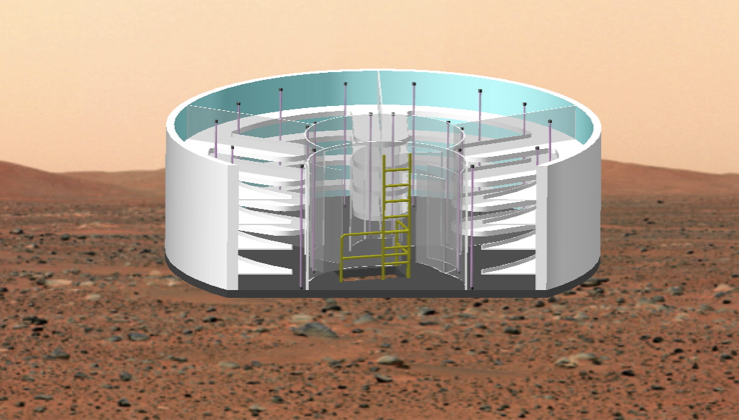On Deck Three, Valerie began unpacking gear and setting up the Hydroponic Station. The heart of the Hydroponic Station is at the top of the ladder (just like the galley on the mid-deck). Directly ahead, at the top of the ladder, is a sign on the wall that reads: Weed ’em and reap, installed by the assembly crew, to bring a smile.
To go beyond the work area, a crewman would then have to pass through an airtight hatch and enter a small corridor surrounded by other airtight hatches, numbered One through Four, which lead into the four garden bays. To proceed yet further, one hatch must be sealed and the corridor ventilated before opening another hatch. This is not as cumbersome as passing through an airlock, more of a high-speed intake/output fan, but it does cut down on the risk of cross-contamination, should there be a potato blight or crop failure of some type in one of the bays.
Bolo One’s preloaded gardens are already growing well, with the seeds sprouting in the hydroponic troths and almost ready to be set out. When Valerie was speaking to a group of reporters before liftoff and explaining the work she would be doing on the way to Mars, she told them, “To propagate future crops the entire crew will take turns assisting her and Brandon with seed germination, trothing, and feeding, before setting the taller plants in their nutrient-rich Rockwool packs. This natural fiber was developed to have all of the same properties as high-quality soil, but 90% lighter. For plants that would normally take ten pounds of potting soil, you only need one pound of Rockwool. If you have to take dirt to Mars, make it the lightest dirt you can find.
“Typically, hydroponics means without soil, but by using the Rockwool as a medium for supporting the sprouts, less water flow will be required. Thus, less work for the pump, less power drained from the solar panels, etc. Initially, sprouts are started in the traditional hydroponic troths, or trays.”


